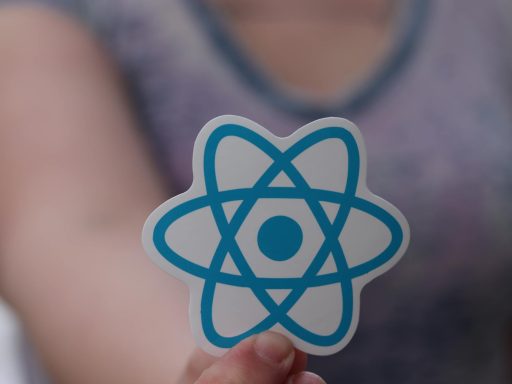Welcome to the exciting world of machine learning! Whether you’re a curious beginner or an aspiring data scientist, this guide is here to help you take your first steps into this fascinating field. We’ll cover everything you need to know to get started with machine learning, from understanding the basics to exploring practical applications. By the end of this article, you’ll have a solid foundation to embark on your machine learning journey.
What is Machine Learning?
Machine learning is a subset of artificial intelligence (AI) that enables computers to learn from data and make predictions or decisions without being explicitly programmed. It’s all about creating algorithms that can find patterns in data, learn from them, and use this knowledge to make informed decisions.
Key Concepts in Machine Learning
- Algorithms: At the heart of machine learning are algorithms. These are mathematical models that process data and learn from it. Some popular algorithms include decision trees, neural networks, and support vector machines.
- Training Data: This is the dataset used to train the machine learning model. It consists of input data and the corresponding correct output. The model learns from this data by adjusting its parameters to minimize errors.
- Features and Labels: Features are the input variables used to make predictions. Labels are the output or target variables. For example, in a spam detection system, the features could be email text, and the label could be “spam” or “not spam.”
- Overfitting and Underfitting: Overfitting occurs when a model learns the training data too well, including noise and outliers, and performs poorly on new data. Underfitting happens when a model is too simple to capture the underlying patterns in the data.
Why Learn Machine Learning?
Machine learning is transforming industries and shaping the future. Here are some reasons why learning machine learning is a valuable investment:
- Career Opportunities: The demand for machine learning engineers and data scientists is skyrocketing. Companies are looking for skilled professionals to harness the power of data.
- Innovative Solutions: Machine learning is driving innovation in fields like healthcare, finance, and transportation. It enables the development of smarter, more efficient systems.
- Problem Solving: Machine learning provides tools to solve complex problems that traditional programming cannot handle. It’s about making sense of large amounts of data to make better decisions.
Getting Started with Machine Learning
1. Learn the Basics of Programming
Before diving into machine learning, it’s essential to have a solid foundation in programming. Python is the most popular language for machine learning due to its simplicity and extensive libraries. Here are some steps to get started:
- Install Python: Download and install Python from python.org.
- Learn Python Basics: Familiarize yourself with Python syntax, data structures, and basic programming concepts. Websites like Codecademy and Coursera offer excellent courses for beginners.
2. Understand the Math Behind Machine Learning
A good grasp of mathematics is crucial for understanding machine learning algorithms. Key areas include:
- Linear Algebra: Understand vectors, matrices, and operations on them.
- Calculus: Learn about derivatives and integrals, which are used in optimization algorithms.
- Probability and Statistics: Get comfortable with probability distributions, statistical tests, and data analysis.
3. Explore Machine Learning Libraries and Tools
Python offers a rich ecosystem of libraries and tools for machine learning. Some essential ones include:
- NumPy: A library for numerical operations.
- Pandas: A powerful data manipulation and analysis library.
- Matplotlib and Seaborn: Libraries for data visualization.
- Scikit-Learn: A comprehensive library for machine learning algorithms.
- TensorFlow and Keras: Libraries for building deep learning models.
4. Study Machine Learning Concepts and Techniques
Delve into the core concepts and techniques of machine learning:
- Supervised Learning: Learn about regression and classification algorithms. Examples include linear regression, logistic regression, and k-nearest neighbors.
- Unsupervised Learning: Explore clustering and association algorithms. Examples include k-means clustering and hierarchical clustering.
- Reinforcement Learning: Understand how agents learn to make decisions by interacting with an environment.
5. Work on Real-World Projects
Hands-on experience is crucial for mastering machine learning. Start with small projects and gradually take on more complex challenges. Here are some project ideas:
- Predict Housing Prices: Use historical data to predict future house prices.
- Sentiment Analysis: Analyze customer reviews to determine sentiment (positive, negative, neutral).
- Image Classification: Build a model to classify images into different categories.
6. Join the Machine Learning Community
Learning is more enjoyable and effective when you’re part of a community. Join forums, attend meetups, and participate in online discussions. Some popular platforms include:
- Kaggle: A platform for data science competitions and collaborative projects.
- Reddit: Subreddits like r/MachineLearning and r/DataScience offer valuable insights and discussions.
- GitHub: Explore open-source machine learning projects and contribute to them.
Additional Resources
Here are some additional resources to deepen your understanding and keep you updated with the latest trends in machine learning:
- Books: “Hands-On Machine Learning with Scikit-Learn, Keras, and TensorFlow” by Aurélien Géron and “Pattern Recognition and Machine Learning” by Christopher Bishop.
- Online Courses: Courses from Coursera, Udacity, and edX.
- Blogs and Articles: Follow blogs like Towards Data Science and Machine Learning Mastery.
Conclusion
Getting started with machine learning may seem daunting, but with the right resources and a step-by-step approach, you can build a solid foundation. Remember to practice regularly, stay curious, and keep learning. Machine learning is a dynamic and evolving field, offering endless opportunities to innovate and solve real-world problems. Good luck on your machine learning journey!
If you found this guide helpful, share it with others who might be interested in machine learning. Don’t forget to check out our blog for more articles and tutorials on data science and AI. Happy learning!





